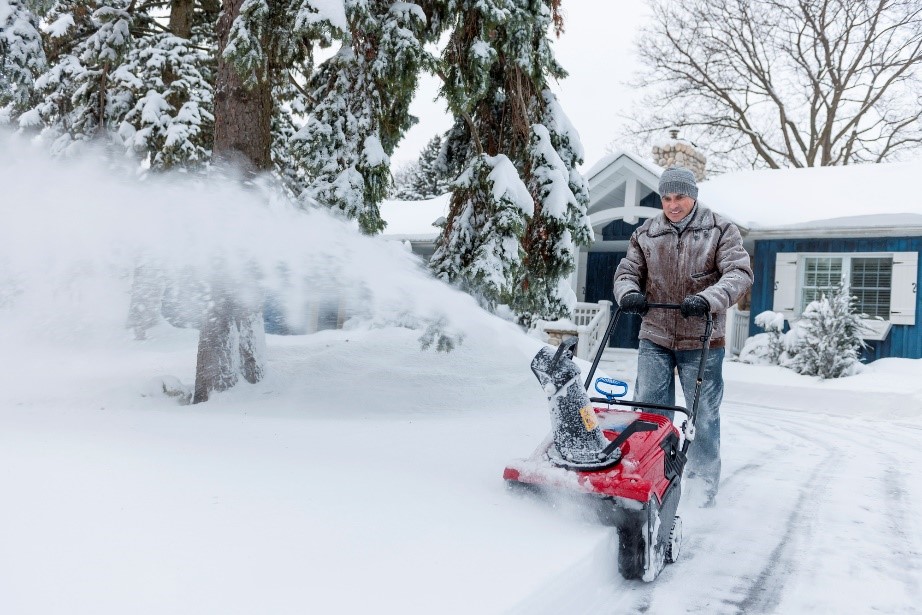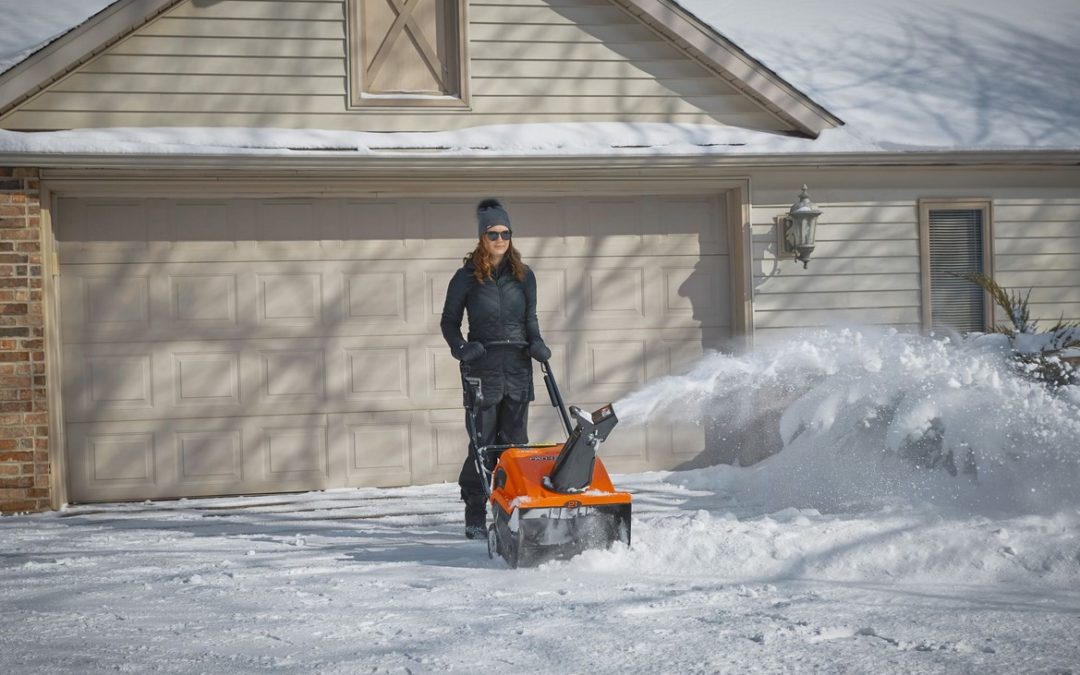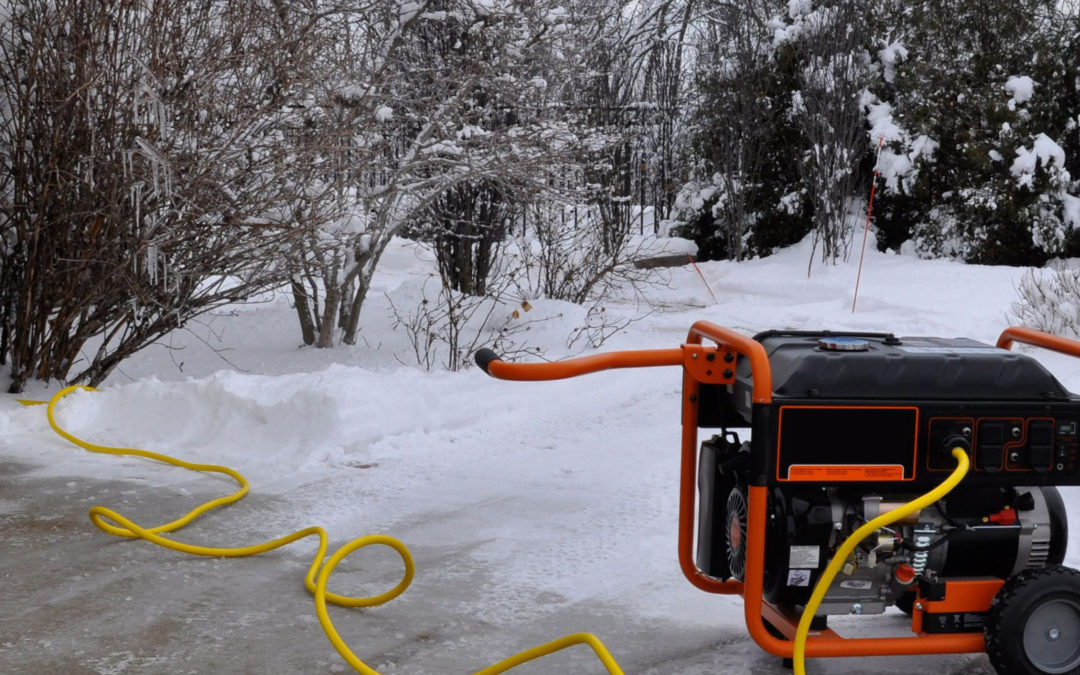
5 Ways the Yard Really Sells a House During the Pandemic (and Beyond)
In the era of the coronavirus pandemic, many buyers are looking for bigger homes with larger yards. A recent study released by the National Association of Realtors® (NAR) indicated that outdoor space was one of the top features that have gained importance during the pandemic.
It’s not surprising. After all, the family yard continues to be a safe place for people to get outside, breathe in fresh air, de-stress, and reconnect with family, friends, and nature. As this information from the Outdoor Power Equipment Institute (OPEI) illustrates, there are many benefits of the family yard during the pandemic…and beyond.
Connect to people & pets. The family yard is a safe place to connect with friends and family, including the furry, four-legged ones. More than ever, our personal green space has become a canvas for memory-making as people mark milestones, celebrate holidays, and gather with friends and family (from a safe social distance), all from the comfort and safety of the yard.
Nature oasis. Connecting to nature doesn’t need to entail a road trip to a national park. Nature starts right outside your backdoor. Take a break from Zoom meetings, screen time and feeling cooped up by bundling up and spending some time in your yard. Listen to the birds. Take a few refreshing deep breaths. Look up at the sky. You can even use your outdoor time as meditation time.
Health & well-being boost. Science has proven that simply spending time outside is good for human health and well-being – important as we seek creative ways to stay well while staying closer to home. A Stanford University study found that walking in nature resulted in decreased anxiety and stress while at the same time increasing working memory performance.
Environmental superhero. Backyards help the planet since grass, trees, shrubs and flowers are part of the living landscape, which is an environmental superhero. Yards capture and filter rainwater, produce oxygen, absorb carbon, capture dust and particulate matter, reduce soil erosion and mitigate the heat island effect.
Connected ecosystem. Birds, bees, butterflies, bats, and other creatures are critical to our food supply and a healthy environment. Yards are an important part of the connected ecosystem providing much-needed food and shelter for backyard wildlife, year-round. By becoming a steward of your yard, you are helping preserving your own corner of the overall ecosystem.
For more information about the benefits of the living landscape, go to TurfMutt.com.

Snow & Ice Tips to Protect Yards This Winter
With the pandemic keeping people sheltering at home, more people are extending their outdoor time in the winter by adding fire pits, outdoor heaters and other features. Even in the wintertime, it’s important to take care of your yard. The Outdoor Power Equipment Institute, an international trade association representing power equipment, small engine, portable generator, utility vehicle, golf car and personal transport vehicle manufacturers and suppliers, offers tips to keep your yard in top shape for winter use.
Stop trimming your lawn once it freezes. Trim your grass to the height recommended for your lawn variety before it freezes. Cutting your grass too short can leave it dry and exposes it to the elements, not to mention insects and disease.
Add a thin layer of mulch to your lawn before it’s too cold. A thin layer of mulch can protect your grass roots from snow and frost. It can even prevent deeper layers of soil from freezing, making it easier for your lawn to bounce back in the spring.
Check your trees for dead or damaged limbs. Removing dead or damaged limbs before inclement weather arrives, is one way to protect your shrubs and yard from damage (not to mention people and pets!).Snow and ice can weigh heavily on dead branches and make them snap and fall. Remove any dead branches carefully with clippers, a chainsaw or pole pruner, following safety precautions. Consult an arborist for problematic trees.
Mark pathways to clear and beds to avoid. Mark the areas that you will need to clear of snow and ice, as well as areas you want to avoid, like flower beds. Stakes or sticks can help. When it’s time to run your snow thrower, you won’t accidentally cut a path through the lawn and can stick to your walkways. Always follow manufacturer’s safety procedures and never put your hand inside the snow thrower. Always use a clean out tool or stick to clear a clog. Be sure that children and pets are safely inside and not near outdoor power equipment while it’s being operated.
Keep new (and old) plantings well-hydrated. Many people have added trees and shrubs to their yards during the pandemic, and caring for them in the winter is still important. Plants and trees that are well-hydrated are more likely to survive a hard freeze so water well before the cold snap sticks. Newly planted trees can only survive about two weeks in the winter without water, so be sure to water any new trees you’ve added to your landscape if they aren’t getting water naturally from rain or snow. If your outside hose is already shut off for the winter, then use a bucket and add 5 gallons to the area around the tree.
Continue watering plants and trees even after the leaves drop. Older plants and trees should enter winter well-hydrated, so continue watering even after the leaves have dropped. Even in the wintertime, hardy evergreen plants continue to lose moisture through their needles and if it’s a dry winter they need supplemental water too.
Don’t shake heavy snow and ice off branches. It may be tempting for children (or adults) to wiggle those branches and watch the snow come off, but snow or ice can damage a branch. Shaking them can cause the branches to snap. It’s better to wait until the snow melts to assess the damage.
Remove damaged branches as soon as the weather allows you to do it safely. If snow or ice have snapped a limb, look at the cut and assess the damage. Try to get a clean cut on an already broken branch or limb, as this will make it more difficult for insects or disease to enter the stressed area on your tree or shrub. Follow all manufacturer’s safety precautions if using a chainsaw or pole pruner.
Be careful about salt. Salt can melt snow and ice, but it can also damage plants and trees by drawing water away from their roots. Keep salt applications away from your trees and shrubs. Salt should also be cleaned off pet paws following a romp outside in the snow.
Remember to get outside, even when it’s chilly. It’s good for our mental and physical well-being to spend time in our family yards and breathe in the fresh air – and it also helps us connect to each other and with nature.
To learn more, go to TurfMutt.com.

Snow Thrower Usage: Get Ready Before the First Flakes Fall & Keep Safety Top of Mind
The Outdoor Power Equipment Institute (OPEI) encourages homeowners to ready their snow throwers, often referred to as snow blowers, and other winter equipment as winter descends.
“Weather is more unpredictable now than ever, so you want to be ready before the first flakes fall. Get your snow thrower serviced now, before repair shops are busy,” says OPEI President and CEO Kris Kiser. “Now is also the best time to review your owner’s manual and operating procedures. You should know how to operate the controls and how to quickly shut off the snow thrower.”
OPEI offers the following questions to help homeowners get ready and review safety practices.
Have you read your owner’s manual? Review safe handling procedures. Know how to operate the controls. If the manual cannot be found, look it up online, and store a copy on your computer.
Have you checked your equipment since storing it? Make sure all equipment is completely powered off when checking it over. If you forgot to drain the fuel last winter before storing your snow thrower, empty the gas tank. Adjust any cables and check the auger when the equipment is powered off.
Is the equipment where you can get to it easily? Move equipment to a convenient and accessible location, so you can get to it quickly.
Have you purchased the right fuel? Be sure to use the correct fuel, as recommended by your equipment’s manufacturer. Fuel that is more than 30 days old can phase separate and cause operating problems. Buy gasoline ahead of a storm, as driving may be treacherous during storms and stations can be closed. For more information on fueling properly see www.LookBeforeYouPump.com.
Is gasoline being used safely? Before you start the engine, fill up the fuel tank on your snow thrower while the engine is cold and outside your home or garage. Never add fuel to a running or hot engine. Store the gasoline in a fuel container and label with date purchased and the ethanol content. Make sure fuel is stored safely and out of the reach of children.
Are batteries charged? If using a battery/electric-powered snow-thrower, make sure batteries are fully charged, in case electricity goes out during a winter storm.
Is the yard free of obstructions? Snow can hide objects. Doormats, hoses, balls, toys, boards, wires, and other debris should be removed. When run over by a snow thrower, these objects may harm the machine or people.
Are you dressed properly? Locate safety gear now, and place it in an accessible closet or location. Plan to wear safety glasses, gloves and footwear that can handle cold and slippery surfaces.
OPERATING SNOW THROWERS SAFELY
Is your clean out tool or stick ready? NEVER put your hands inside the auger or chute. Use a clean out tool (or stick) to unclog snow or debris from your snow thrower.
Do you turn off your snow thrower if you need to clear a clog? Always turn off the snow thrower and wait for all moving parts to come to a complete stop before clearing any clogs or debris.
Is your snow thrower operated only in visible conditions? Never operate the snow thrower without good visibility or light.
Can you aim your snow thrower with care? Never throw snow toward people or cars. Do not allow anyone to stand in front of your snow thrower.
Will you use extreme caution on slopes and hills? Do not attempt to clear steep slopes and use caution when changing directions on slopes or inclines.
Do you know where your cord is? Use an extension cord that is weather-resistant and designed for outdoor use. If using an electric-powered snow thrower, be aware of where the power cord is at all times. Avoid tripping. Do not run over the power cord.
Are pets and children inside while the snow thrower is operating? Kids and pets may love to play in the white stuff, but it’s best to keep them inside your home and supervised (by someone else) while a snow thrower is operating. Do not allow them to play in the snow as it is tossed out of the chute.
To learn more visit opei.org.

10 Tips for Safe Winter Generator Usage
If your electricity goes out due to snow and ice this winter, a generator can keep power flowing to your home. The Outdoor Power Equipment Institute (OPEI), an international trade association representing small engine, utility vehicle and outdoor power equipment manufacturers and suppliers, reminds homeowners to keep safety in mind when using generators this winter.
“Not having power when you need it is frustrating, so a generator can provide emergency backup power at a reasonable cost,” says Kris Kiser, President and CEO of OPEI. “It’s important to follow all manufacturer’s instructions, and never place a generator in your garage or inside your home. It should be a safe distance from the structure and not near an air intake.”
More tips include:
#1 – Take stock of your generator. Make sure equipment is in good working order before starting and using it. Do this before a storm hits.
#2 – Review the directions. Follow all manufacturer’s instructions. Review the owner’s manuals (look manuals up online if you cannot find them) so equipment is operated safely.
#3 – Install a battery-operated carbon monoxide detector in your home. This alarm will sound if dangerous levels of carbon monoxide enter the building.
#4 – Have the right fuel on hand. Use the type of fuel recommended by the generator manufacturer to protect this important investment. It is illegal to use any fuel with more than 10% ethanol in outdoor power equipment. (For more information on proper fueling for outdoor power equipment visit www.LookBeforeYouPump.com). It’s best to use fresh fuel, but if you are using fuel that has been sitting in a gas can for more than 30 days, add fuel stabilizer to it. Store gas only in an approved container and away from heat sources.
#5 – Ensure portable generators have plenty of ventilation. Generators should NEVER be used in an enclosed area or placed inside a home, a building, or a garage, even if the windows or doors are open. Place the generator outside and away from windows, doors, and vents that could allow carbon monoxide to drift indoors.
#6 – Keep the generator dry. Do not use a generator in wet conditions. Cover and vent a generator. Model-specific tents or generator covers can be found online for purchase and at home centers and hardware stores.
#7 – Only add fuel to a cool generator. Before refueling, turn the generator off and let it cool down.
#8 –Plug in safely. If you don’t yet have a transfer switch, you can use the outlets on the generator. It’s best to plug in appliances directly to the generator. If you must use an extension cord, it should be heavy-duty and designed for outdoor use. It should be rated (in watts or amps) at least equal to the sum of the connected appliance loads. Make sure the cord is free of cuts, and the plug has all three prongs.
#9 – Install a transfer switch. A transfer switch connects the generator to the circuit panel and lets you power hardwired appliances. Most transfer switches also help avoid overload by displaying wattage usage levels.
#10 – Do not use the generator to “backfeed” power into your home electrical system. Trying to power your home’s electrical wiring by “backfeeding” – where you plug the generator into a wall outlet – is dangerous. You could hurt utility workers and neighbors served by the same transformer. Backfeeding bypasses built-in circuit protection devices, so you could damage your electronics or start an electrical fire.
Get more information at OPEI.org.

Connect Outside This Fall: It’s a Safe Place to Spend Time & It’s Good for You
Fall is here, and homeowners can boost their health and connect with nature, friends and family by getting outside and into green space.
“Due to the pandemic, we are gaining a fuller understanding of the importance of the outdoors – from our yard and parks to school yards and sports fields. They are essential to our well-being and to nature, itself,” said Kris Kiser, President of the TurfMutt Foundation, which directs the TurfMutt environmental education and stewardship program, and The Outdoor Power Equipment Institute (OPEI).
TurfMutt has advocated the importance of managed landscapes and other green space as critical to human health and happiness for over a decade.
“We are reconnecting to the family yard in a way we haven’t seen for many years,” said Kiser. He noted that time spent in green space like your yard, is really good for you. “Research shows that time spent outside reduces stress for adults and children alike,” said Kiser. With indoor gatherings limited in many areas and many people eager to see family and friends, the safest place to spend a fall evening catching up and socializing is your yard.

Reconnect with yourself and others. Unplug from your computer, television, and smartphone by getting outside. Disconnecting from electronics, to-do lists and the news cycle lets you re-connect to nature, family and friends.

Burn more calories. A brisk walk around the block or a few minutes of yard work can help you drop the extra “COVID 15” weight that many have added while sheltering at home during the pandemic. Exercising and exertion in cooler temperatures also burns more calories.

Get a happiness boost. Fall afternoons in the yard are great for soaking up sunshine and natural Vitamin D, which can improve your mood and support overall health.

Give your eyes a break. We spend a lot of time looking at screens – on our TVs, computers, tablets, and smartphones. This can overstimulate our eyes and lead to nearsightedness. Just walking outside, you give your eyes an opportunity to relax and widen their focus, as they look at the ground in front of you and to the landscape around you.

Boost your energy. Spending time in nature and breathing fresh air increases energy levels in 90 percent of people, according to research.

Stimulate your brain. Fall yard work in cooler weather, such as digging in planting beds, mulching leaves, aerating soil, and planting trees or shrubs is all good for your brain. Research shows people perform tasks better when temperatures are cooler. Go for a brisk walk around the neighborhood or do a few minutes of yard work.
Get more information at TurfMutt.com.
